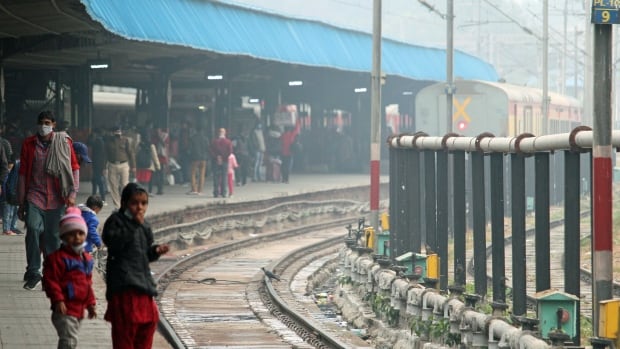The world’s 20 richest countries are fuelling forced labour and account for over half the estimated 50 million people living in “modern slavery,” according to a report released Wednesday.
The report by the Walk Free foundation, a human rights group that focuses on modern slavery, said six members of the Group of 20 nations have the largest number of people in modern slavery — either in forced labour or forced marriage.
India tops the list with 11 million, followed by China with 5.8 million, Russia with 1.9 million, Indonesia with 1.8 million, Turkey with 1.3 million and the United States with 1.1 million.
Out of the G20 countries, Canada was in the fifteenth place for prevalence of modern slavery, ahead of the U.K. and behind France and South Africa, according to the foundation’s report. It said Canada has almost 69,000 people who are being exploited for labour or forced marriage with seemingly no way out.
With the exception of Japan, the countries with the lowest prevalence of modern slavery are from northern or western Europe, the report said.
But even those countries — including Switzerland, Norway, Germany, Netherlands, Sweden, Denmark, Belgium, Ireland and Finland — still have “thousands of people who continue to be forced to work or marry against their will, despite their high levels of economic development, gender equality, social welfare and political stability, as well as strong criminal justice systems,” according to the report.
Increase in modern slavery
Last September, a report by the UN’s International Labour Organization and International Organization for Migration and Walk Free estimated that 50 million people were living in “modern slavery” — 28 million in forced labour and 22 million in forced marriage — at the end of 2021. Overall, that was an increase of 10 million people in just five years from the end of 2016.
Walk Free’s 2023 report provided the same numbers for “any given day in 2021,” with an increase of 10 million since its 2018 index.
“Modern slavery permeates every aspect of our society,” Walk Free founding director Grace Forrest said in a statement. “It is woven through our clothes, lights up our electronics and seasons our food,” she said. Noting it is “a mirror held to power, reflecting who in any given society has it and who does not.”

“Modern slavery is hidden in plain sight and is deeply intertwined with life in every corner of the world,” the Walk Free report said.
“Each day, people are tricked, coerced, or forced into exploitative situations that they cannot refuse or leave. Each day, we buy the products or use the services they have been forced to make or offer without realizing the hidden human cost.”
Global supply chains fuel problem
This is most evident in global supply chains, where G20 nations import $468 million US worth of products annually which are considered “at risk” of being produced by forced labour, including electronics, garments, palm oil, solar panels and textiles, the report said.
It said forced labour occurs in all countries, regardless of income and is “deeply connected to demand from higher-income countries,” with the production and movement of goods between countries creating complex supply chains, “many of them tainted with forced labour.”

Australia-based Walk Free said its 172-page report and estimates of global slavery in 160 countries draw on thousands of interviews with survivors collected through nationally representative household surveys and its assessments of a nation’s vulnerability.
It said the increase of nearly 10 million people forced to work or marry reflects the impact of compounding crises — “more complex armed conflicts, widespread environmental degradation, assaults on democracy in many countries, a global rollback of women’s rights and the economic and social impacts of the COVID-19 pandemic.”
These factors have significantly disrupted education and employment, leading to increases in extreme poverty and forced and unsafe migration, “which together heighten the risk of all forms of modern slavery,” the report said.
The countries with the highest prevalence of modern slavery at the end of 2021 were North Korea, Eritrea, Mauritania, Saudi Arabia and Turkey, it said.
Child labour in cocoa production
The report stressed that forced labour occurs across many sectors and at every stage of the supply chain. It cited the demands for fast fashion and seafood as spurring forced labour that was hidden deep in those industries, while “the worst forms of child labour are used to farm and harvest the cocoa beans that end up in chocolate.”

And while the United Kingdom, Australia, Netherlands, Portugal and United States were noted for having strong government responses to combat slavery, the report said those improvements were fewer and weaker than required.
“Most G20 governments are still not doing enough to ensure that modern slavery is not involved in the production of goods imported into their countries and within the supply chains of companies they do business with,” it said.
In 2015, one of the UN goals adopted by world leaders was to end modern slavery, forced labour and human trafficking by 2030. But Walk Free said the significant increase in the number of people living in modern slavery and stagnating government action highlight that this goal is even further from being achieved.
“Walk Free is calling on governments around the world to step up their efforts to end modern slavery on their shores and in their supply chains,” said Forrest, the foundation’s director. “What we need now is political will.”


